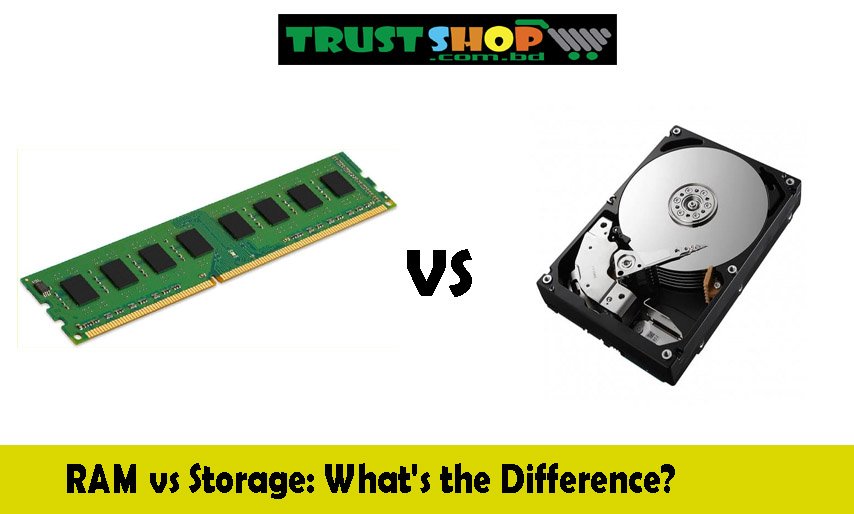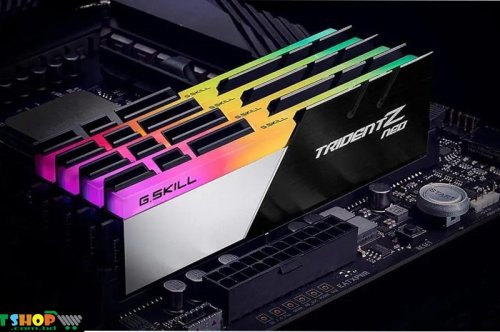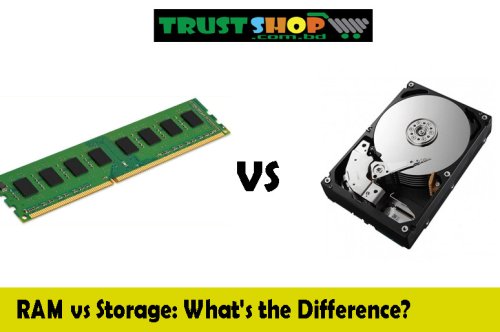RAM vs. Storage: What's the Difference?

RAM (Random Access Memory) and storage are two important parts of computer hardware that people often get confused about. Even though both are very important to how a computer works, they do very different things that make using a computer more enjoyable in their own way.
We're going to talk about "RAM vs. Storage: What's the Difference?" This guide will help you understand these basic parts better by explaining their differences, how they work, and how important they are in the world of computers.
Random Access Memory (RAM) gives your computer a brief place to work, so it can quickly get to data that is being used. It has a direct effect on how fast your system is and how many tasks you can do at once. However, storage, which usually comes in the form of hard drives or solid-state drives (SSDs), stores your files, programs, and operating system for a long time.
By the end of this journey, you'll have a good idea of how RAM and storage work together and how they support each other to make computing run smoothly.
What is RAM
Random Access Memory, or RAM, is one of the most important parts of modern computers. It's the hidden hero that works hard behind the scenes to make your computer do a lot of things quickly and easily. But what is RAM, and why is it so important for how well your device works?
We'll look at the basic idea of this important piece of hardware in this "What is RAM?" article. RAM is more than just a bunch of letters; it's the space on your computer's hard drive where it briefly stores and gets the data it needs right now. It's like your computer's short-term memory, which lets you do a lot of things at once and very quickly. If you didn't have RAM, your system would be so slow that even the simplest things would be hard to do.
What is Storage
Today, when data is king and knowledge is queen, storage is the key to making our world work together. But what is storage, and why is it so important to our daily lives?
Here we are going to look into "What is Storage." We will take a trip through this guide to explain the idea of storage and shed light on the ways we can save, protect, and access our digital treasures. The digital vault where our files, pictures, videos, and apps live is called storage. It keeps our memories and information safe and easy to get to when we need them. Come with us as we figure out how storage works and how it has shaped our data-driven world.
RAM vs. Storage: What's the Difference?
RAM costs more per gigabyte than storage devices. These days, RAM units for computers can be anywhere from 2GB to 32GB. On the other hand, storage devices can have anywhere from 60GB to over 8TB of space. Even though SSDs have been made to work with faster connections, RAM is still much faster at getting data back.
When it comes to updating, RAM is easier to do than storage devices. To increase their RAM, users only need to put a new RAM card in the right RAM slot while the computer is off. To upgrade storage devices, you have to make a copy of the drive and load drivers so that the new device can fully work with your computer.
If your computer's disk room is running out, you can use an external storage device instead. Through USB, most external storage devices can be read by a computer.
On the other hand, external gadgets can't be used to improve RAM. If you run out of RAM, you'll need to buy a new RAM module to add to the ones that are already in the computer, as long as there are still RAM slots available.
Final Thoughts
When it comes to computers, the difference between RAM and storage is not just a matter of words; it's a basic idea that determines how our devices work. RAM is like a quick sprinter; it gives you quick access to data and instructions for the jobs you need to do. Storage, on the other hand, is like a steady marathon runner; it keeps our files and programs for a long time.
These are my last words on "RAM vs. Storage: What's the Difference?" It's clear that both are necessary and have roles that can't be filled by anyone else. Storage protects our digital lives by keeping our memories and important data safe, while RAM gives our computers the speed and efficiency we want.
Knowing the difference between RAM and storage helps us understand how they work together to make computers smooth and quick. This information gives you the power to make smart choices and use your device to its fullest, whether you're upgrading your system or fixing performance problems.











